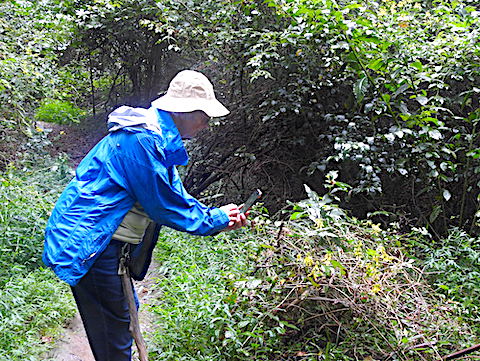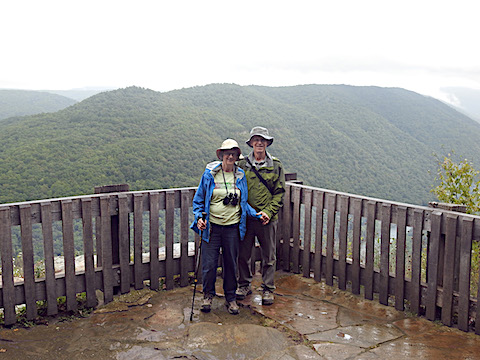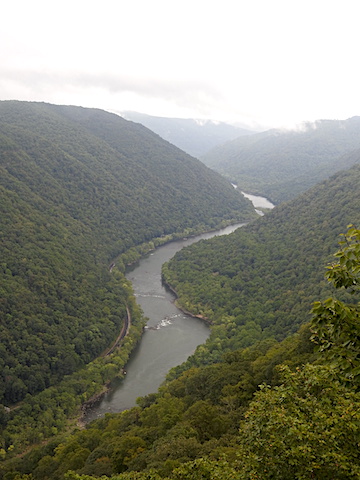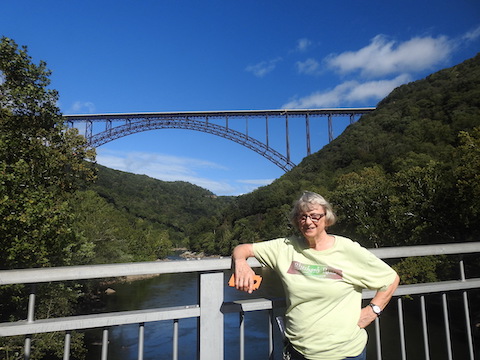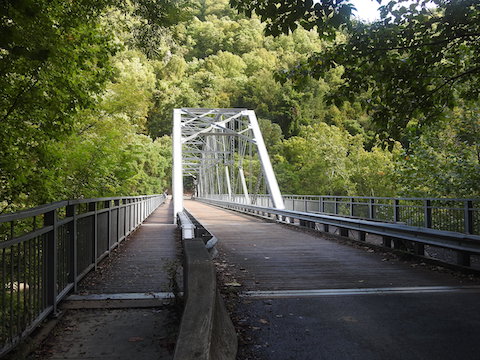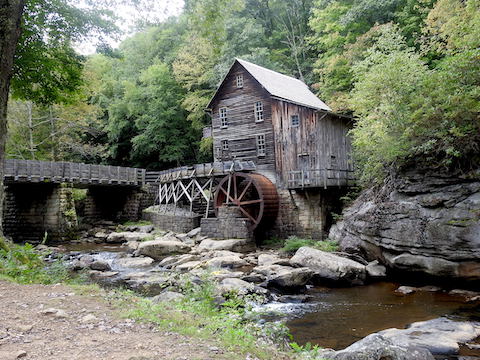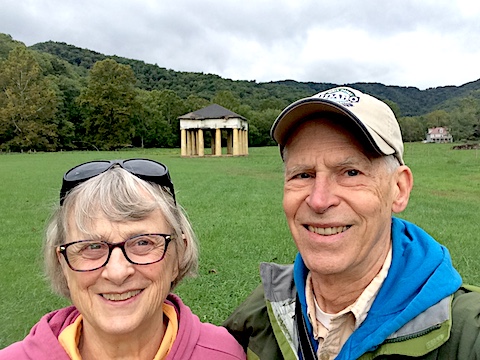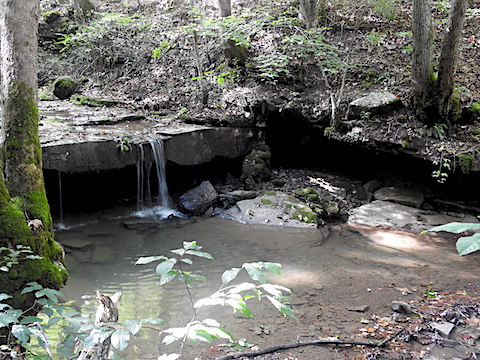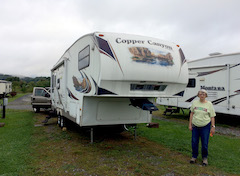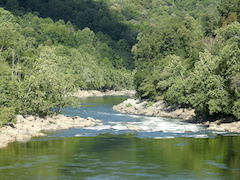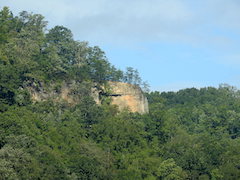New River is misnamed. Because it cuts through the Appalachian Plateau, it is thought to be older than the mountains and, hence, hundreds of millions of years old.
Our first destination in the park was Sandstone Falls, where the 1500-foot wide river crosses a ledge. The falls come in two parts. On the east side, the river falls 25 feet over the Main Falls, while on the west, it first goes down a rapids and then falls 10 feet in the Lower Falls. The photo at the right shows the Main Falls from an overlook 600 feet above it. The Lower Falls are hidden behind the leaves at the upper right of the photo.
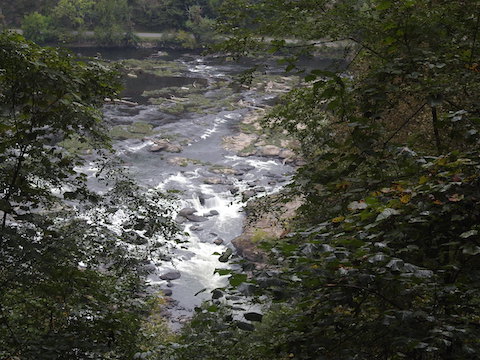
The Main Falls on a misty day and with low water flow
The Lower Falls
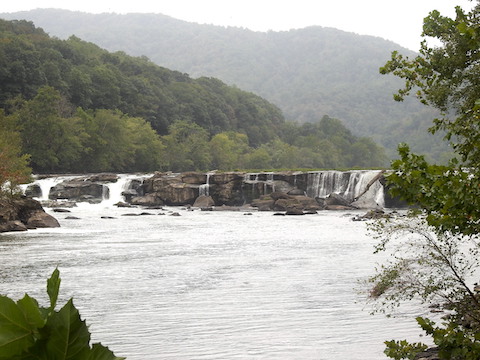
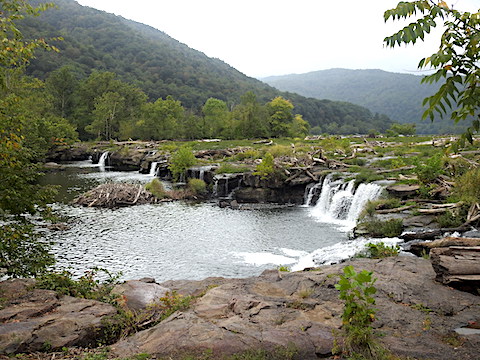
Some paw paw fruit on the Island Loop Trail at the falls
Gail examines Yellow Ironweed flowers on the Island Loop Trail

